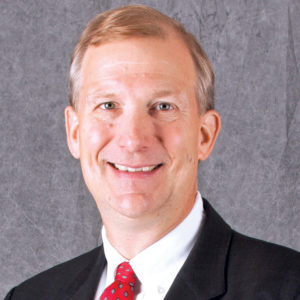
Trust is such a wonderful thing. It’s a compass that ultimately gets us where we’re going.
Either we’re trying to create trustful bonds with friends and colleagues, or we’re busy trying to figure out if others are trustworthy. That’s about all it comes down to when you think about it.
Who are you going to trust, and why? They’re central questions now more than ever.
Young children seem especially adept at developing BS-meters, and that’s good. Nowadays, everyone needs a good one. We’re in a time when social and mainstream media have been exploited to breed cynicism at historically high levels. Trust languishes, and there’s no signs of temperance in sight.
So it’s nice to know whom you can turn to in time of professional need. Gallup recently released the results of its latest annual honesty and ethics survey covering 22 occupations. As usual, the nuances are intriguing.
The overall results may not be much of a surprise to those who follow these things closely. The most trusted profession? Once again, it’s nurses. They haven’t been unseated from the top spot for 20 years. The last time was right after the 911 terrorist attacks, when firefighters took center stage.
Nurses have earned their star billing. The pandemic not only pins them at the front lines, it’s done so against a deadly, invisible devil that has killed more than 2,000 nursing home workers alone. They never saw it coming — and never had the option of working from their own homes, either, something that more safely situated, tone-deaf colleagues might complain about at times.
Most trusted by a wide margin
With 81% of respondents saying nurses have very high or high levels of honesty and ethics, they easily soared above the next profession, medical doctors (67%). The rest of the top five were grade-school teachers (64%), pharmacists (63%) and military officers (61%).
Findings indicated those in leadership positions are failing to earn or keep the public’s trust. Meanwhile, mid- to frontliners getting it done are earning the respect.
Responses were gathered Dec. 1-16 from a random sample of 811 adults spread through all 50 states.
Overall, the medical field returned to a more “normal” state after enjoying pandemic image-surges worth an extra 8% to 10% over the last two years. Included in that trend are nursing home operators, who rang in at 27% for very high/high this year, down from at least a 20-year high of 36% at the end of 2020.
Overall, however, nursing home operators’ image has largely remained steady. Ratings in past Gallup polls were: 24% (2004), 21% (2007), 26% (2010), 32% (2013), 26% (2017) and 36% (2020). Nursing home operators are not gauged every year.
The constancy of those ratings could be a bad thing. One might think living and working in the single setting most identified with COVID-19 victims would garner more sympathy and respect than it apparently has.
Balance for nursing homes
It could be, as many in the field fear, that most people believe that nursing homes are generally undesirable places that serve an often-unwelcome purpose. The equanimity with which skilled care operators were viewed in this latest Gallup poll, however, is remarkable.
Operators were the only profession of the 22 that had a perfectly symmetrical showing: 27% rated them very high or high and the same amount very low or low; 46% said “average.”
Joining SNF leaders with the most relative neutral ratings were bankers (7% to the more positive balance) and local officeholders (2% to the more negative).
Reasons for hope
Nursing home operators may be considered less admirable than the top five listed above — or the likes of police officers (53%) or day care providers (50%), among others. But at least they can take solace they are not at the bottom of the scale with lobbyists (only 5% rated very high or high).
Then again there is hope for everyone, if reading the tea leaves from this most recent Gallup poll teaches us anything.
Although not in the top tier, one occupation is at an all-time high after 20 years of gradual climbing. For reasons not entirely clear, all demographic groups have raised it from 22% in 2001 to 35% today.
Yes, if that can happen with historically distrusted auto mechanics, there can be hope for anyone.
James M. Berklan is McKnight’s Long-Term Care News Executive Editor.
Opinions expressed in McKnight’s columns are not necessarily those of McKnight’s.




